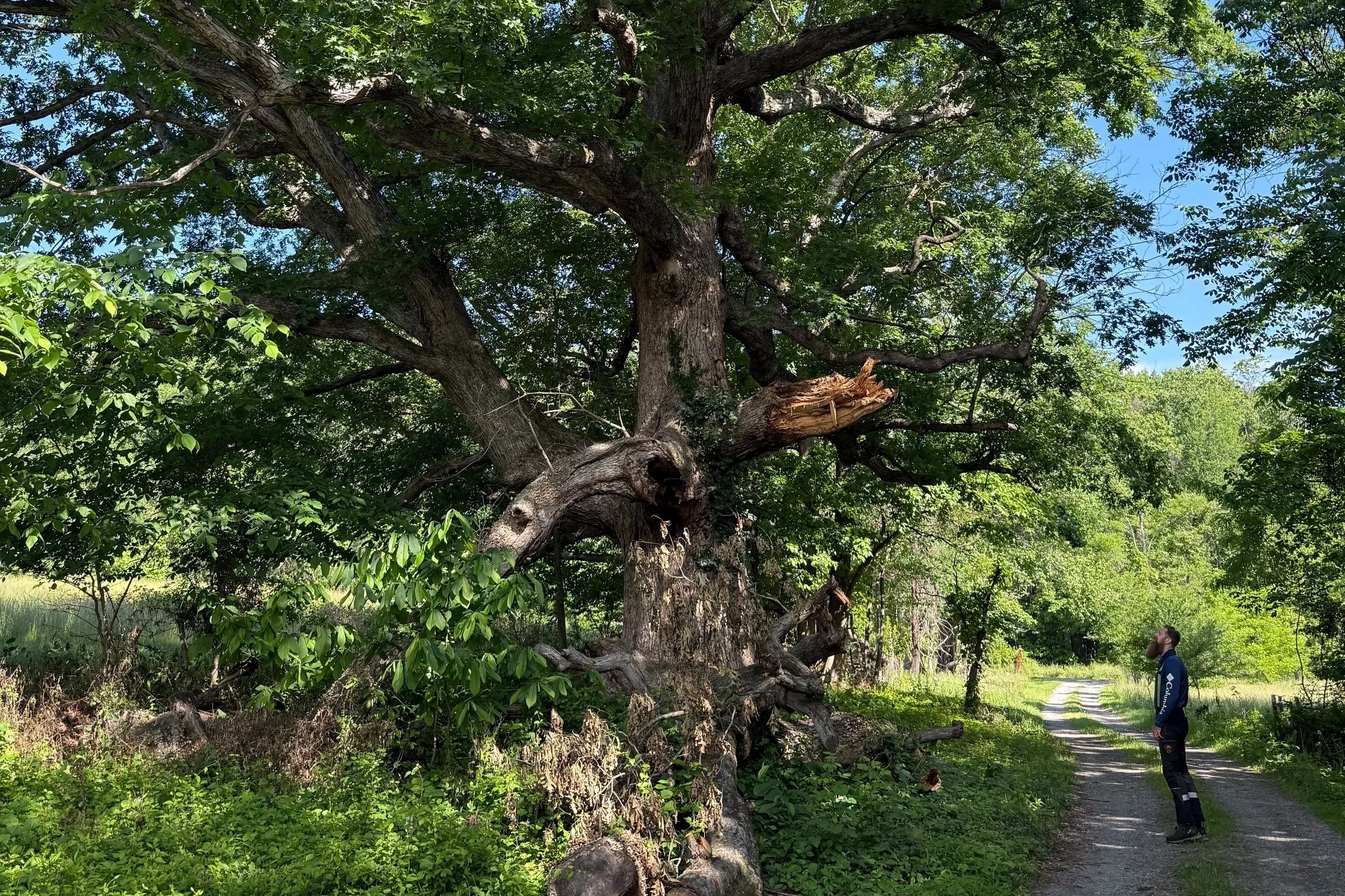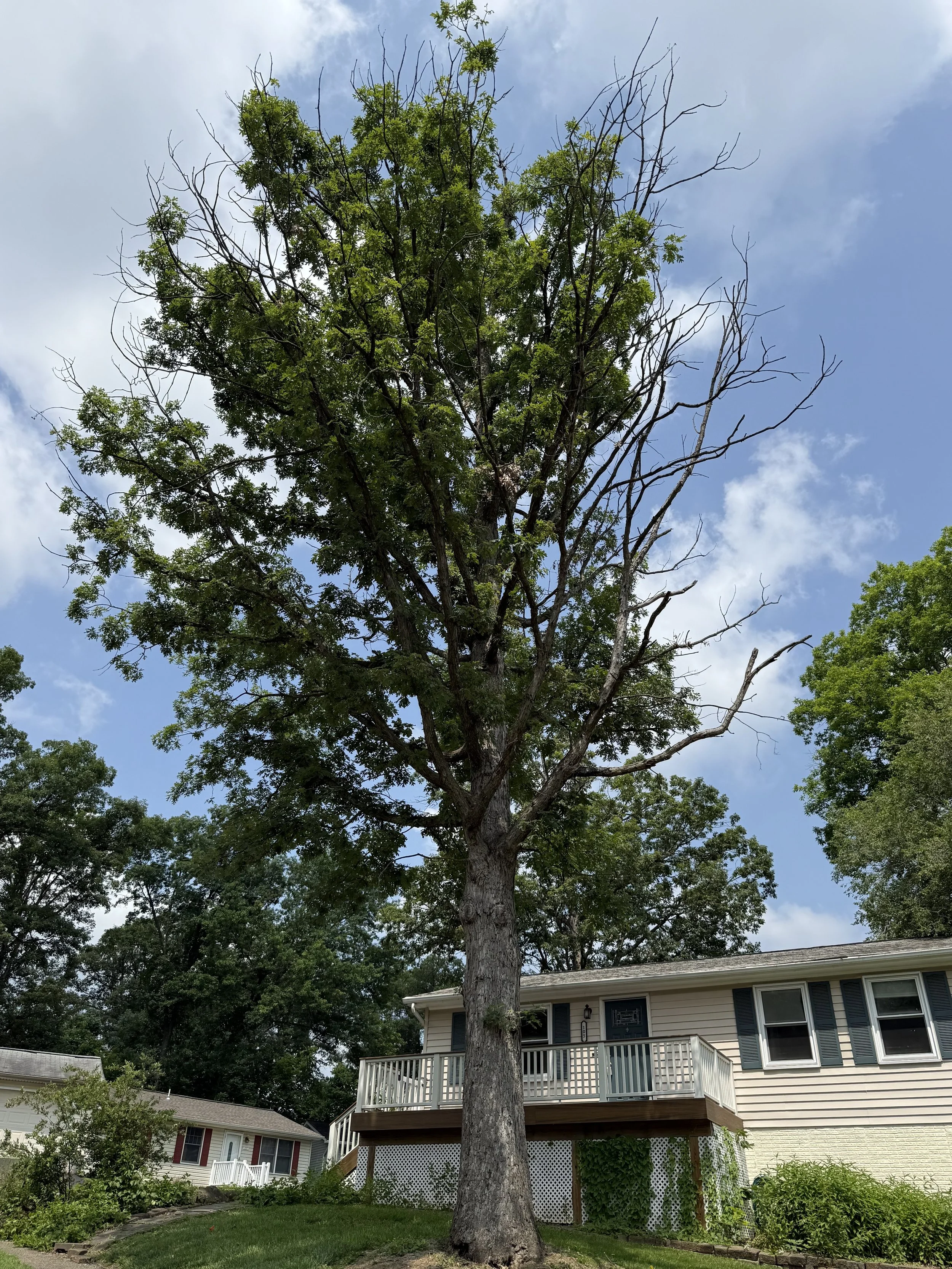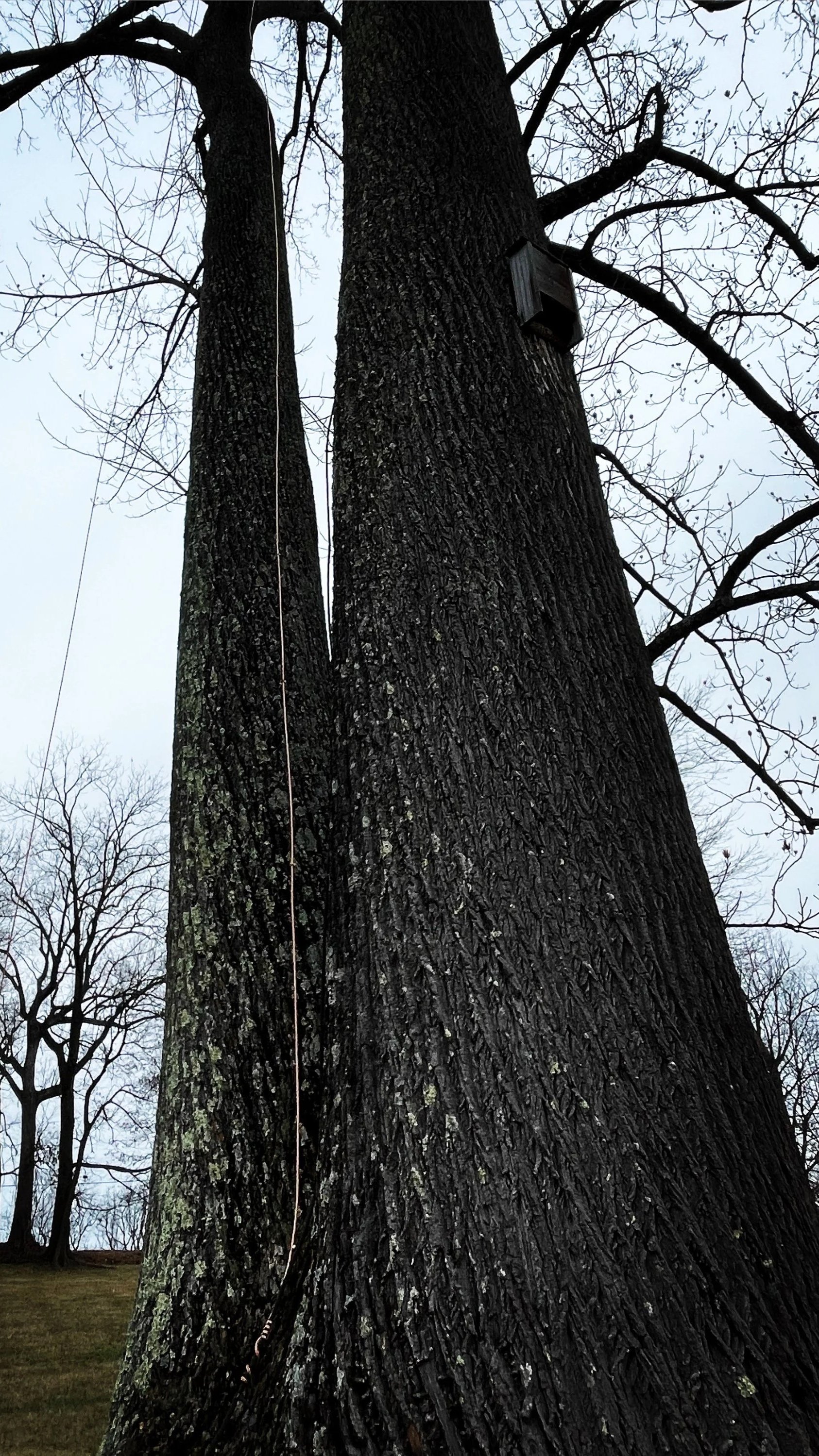
Get help with all your arboricultural needs.
Our services
Pruning
Tree pruning is the selective removal of branches from a tree. Unlike simple trimming, which is often done for aesthetics, pruning is a targeted practice focused on a tree's health, safety, and structural integrity. An arborist strategically cuts away dead, diseased, damaged, or weak branches to improve the tree's overall well-being. When done correctly, this process helps a tree compartmentalize and seal its wounds, preventing decay and the spread of pests and diseases.
Pruning is essential for both the long-term structure of a tree and for human safety.
For Structure: Pruning a young tree helps it develop a strong, central trunk and a well-balanced branch structure. By removing crossing branches or those with weak attachments, an arborist can prevent structural defects that could lead to failure later in the tree's life. For mature trees, pruning helps maintain this strong framework, improving airflow through the canopy and reducing the risk of limbs breaking during high winds or heavy snow.
For Safety: Dead, decaying, or unstable branches pose a significant risk to people and property. These limbs can fall without warning, causing injury or damage to homes, vehicles, and power lines. Pruning removes these potential hazards, making the area beneath and around the tree safe. It also helps clear branches that may be growing too close to buildings, sidewalks, or utility lines, preventing a wide range of potential accidents and damages.
Cabling, Lightning Protection, and Soil Mitigation
Tree Cabling - Tree cabling is a technique arborists use to provide supplemental support to a tree's structure. Flexible steel cables are installed high in the canopy, connecting weak or compromised limbs to stronger ones. This process limits the movement of branches during high winds or heavy snow, which reduces the risk of them breaking off and causing damage. It's often used for trees with co-dominant stems (multiple main trunks growing from a single point) or overextended limbs, where the weight and angle of the branch create a high risk of failure.
Lightning Protection - A lightning protection system for a tree is designed to prevent damage from a lightning strike by providing a safe path for the electrical current to travel to the ground. A strike can cause catastrophic damage, including splitting the trunk, shattering branches, and even killing the tree. A protection system uses a series of copper cables and grounding rods installed from the highest point of the tree's canopy, down the trunk, and into the ground. When lightning strikes, the system intercepts the electrical charge and directs it harmlessly into the earth, bypassing the tree itself
Soil Mitigation - Soil mitigation for trees involves improving the soil environment to promote healthy growth and vitality. Healthy soil is the foundation of a healthy tree, providing essential nutrients, water, and oxygen to the root system. Soil mitigation techniques can include:
Aeration: Relieving compacted soil, which restricts water and nutrient uptake.
Mulching: Applying a layer of organic material around the base of the tree to retain moisture, regulate soil temperature, and provide nutrients as it decomposes.
Compost Tea or Biostimulants: Introducing beneficial microorganisms to the soil to improve its biological activity and structure.
These treatments enhance the root zone, helping the tree to better withstand stress from pests, diseases, drought, or urban conditions.
Tree Removal
Tree removal, often referred to as a "take down," is the process of safely and efficiently dismantling a tree from its location. This service is performed when a tree is dead, dying, diseased, or has become a hazard to people or property.
The process is highly complex and requires specialized skills and equipment to ensure safety. Arborists first conduct a thorough assessment of the tree's health, size, and location, identifying any potential risks such as nearby structures, utility lines, or other trees. Based on this assessment, they determine the safest method of removal.
For trees in confined spaces or near structures, a take down is typically done in sections. A climber, or a crane, is used to remove branches and trunk segments piece by piece, which are then carefully lowered to the ground using a system of ropes and pulleys.
“I want to tell you how pleasant the couple was that came to do the work yesterday. They worked so hard, made sure it looked ok with me and cleaned everything up. Big thank you for a great job!”
Jillian H. - Leesburg, VA



